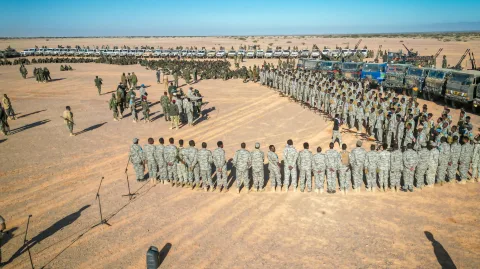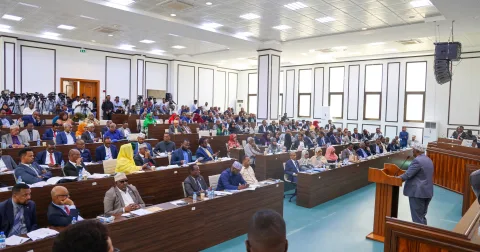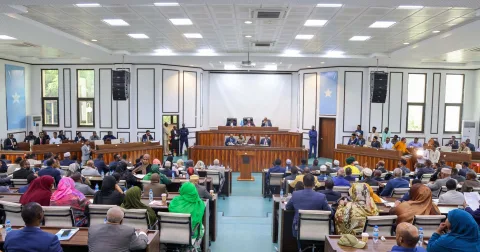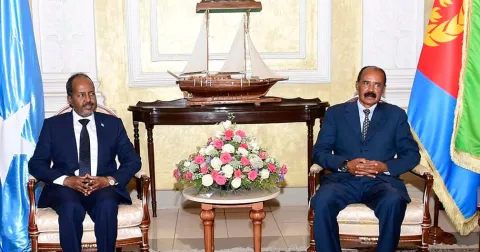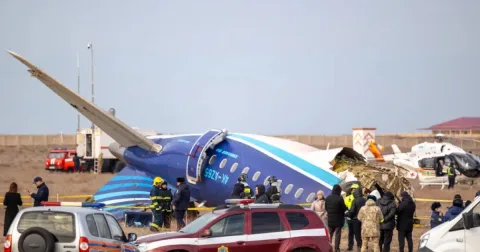Most humanitarians see the dire situation in Somalia as the worst possible combination of circumstances. War, poverty, displacement, drought, famine

Most humanitarians see the dire situation in Somalia as the worst possible combination of circumstances. War, poverty, displacement, drought, famine – not to mention pirates and Islamist rebels who don’t like foreign aid workers.
Somalia has the lot. Somalia is, well….Somalia (cue: deep sigh and despairing shrug).
Years of anarchy since the fall of dictator Mohamed Siad Barre in 1991, combined with frequent drought and rampant inflation, have turned Somalia into one of the world’s worst humanitarian crises.
Back in the early 1990s, civil war and famine killed some 250,000 people.
More recently, the rise of indigenous Islamist movements in southern Somalia has rekindled fears the lawless territory might become a safe haven for al Qaeda and other groups branded as terrorists.
To top it all, a severe drought since late last year has left 4 million Somalis in need of food aid, with hundreds dying every day due to the famine in the south, at least half of them children.
Just how much do 20 years of state failure and recurring disasters like this cost, both in human and monetary terms?
A report from One Earth Future Foundation and the Center for American Progress attempts to quantify the destruction and misery. “The cost of Somalia’s ruin is nothing short of staggering,” it says.
It estimates – conservatively, it notes – that the international community, including the Somali diaspora, has collectively spent just over $55 billion responding to Somalia since 1991.
Here are some facts and figures from “Twenty years of collapse: The cost of failure in Somalia”, which draws on a wide range of U.N. and other data:
Major financial costs to the international community since 1991. Total: $55.3 billion, consisting of:
- Humanitarian and development aid – $13 billion
- Remittances – $11.2 billion
- Peacekeeping, military responses/aid, counter-terror and diplomacy – $7.3 billion
- Piracy – $22 billion
- International crime and illicit financial flows – $2 billion
- Direct bilateral assistance to the government which disappeared in 2009 and 2010 (according to a confidential audit of the Somali government) – 96 percent
Major human costs of Somalia since 1991:
- Deaths – 450,000 to 1.5 million
- Refugees – more than 800,000
- Internally displaced people – more than 1.5 million
Other facts
- Average length of the term of a Somali prime minister since 2000 – 11.9 months
- Annual revenue of Islamist rebel group al Shabaab (U.N. estimate) – $70 million-$100 million
- Difference in life expectancy between a citizen of Japan and Somalia – 32.2 years
- Average number of births per Somali woman – 6.3
- Odds that a Somali child will die before their fifth birthday – 1 in 7.4
“Somalia remains a tragic case study of the international community getting it wrong repeatedly,” the report argues.
The U.S. government is heavily criticised for its “wilful disregard for sensible diplomacy”, including propping up the regime of Siad Barre in the 1980s and supporting a “disastrous” 2006 Ethiopian invasion.
“At a time when the fiscal climate in Washington is extraordinarily difficult…it is all the more vital that we approach conflicts like Somalia with sensible long-term strategies rather than knee-jerk responses,” the report concludes. “The cost of any other approach is simply too high.”
The full report can be downloaded from the Center for American Progresswebsite. AlertNet has a crisis briefing that explains the background to Somalia’s crisis.

